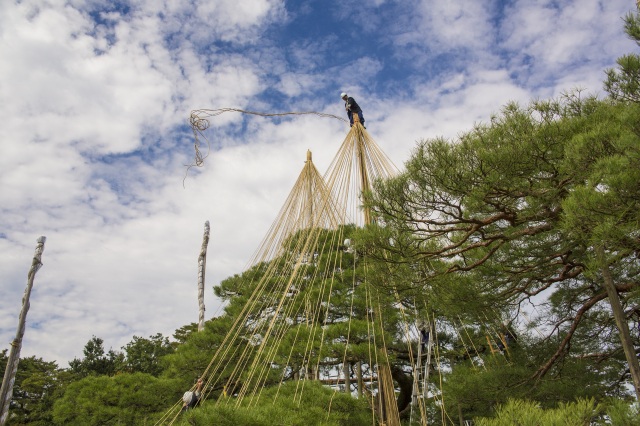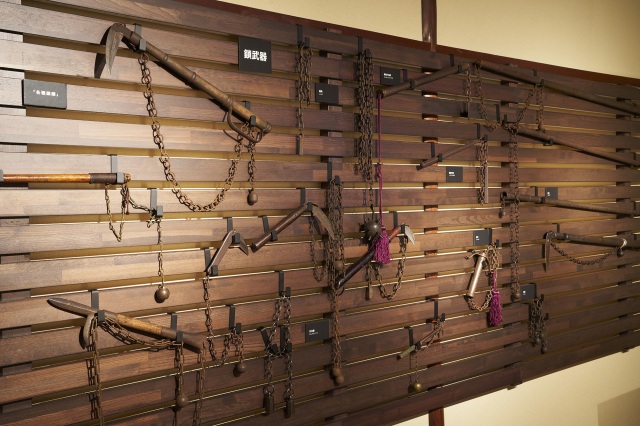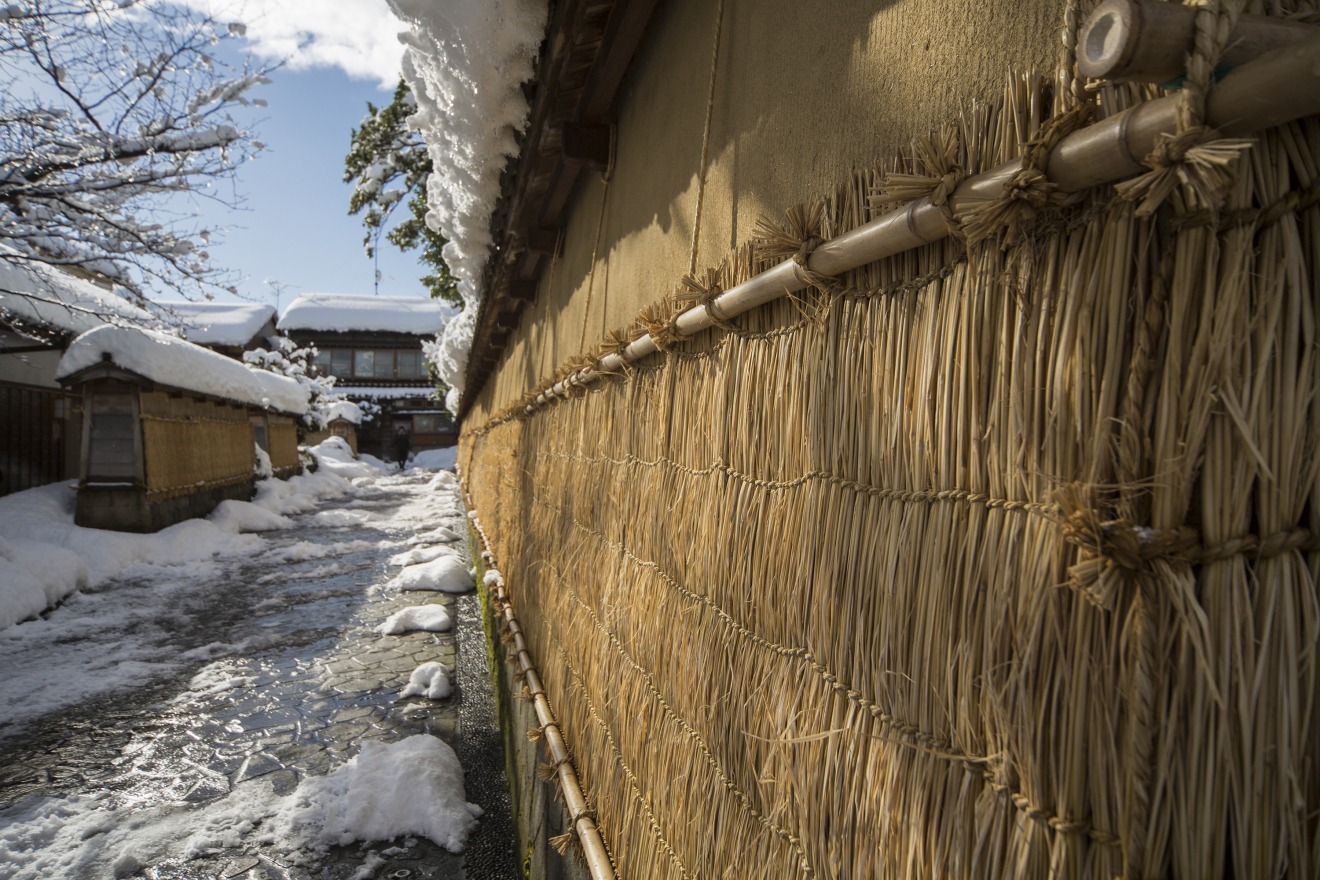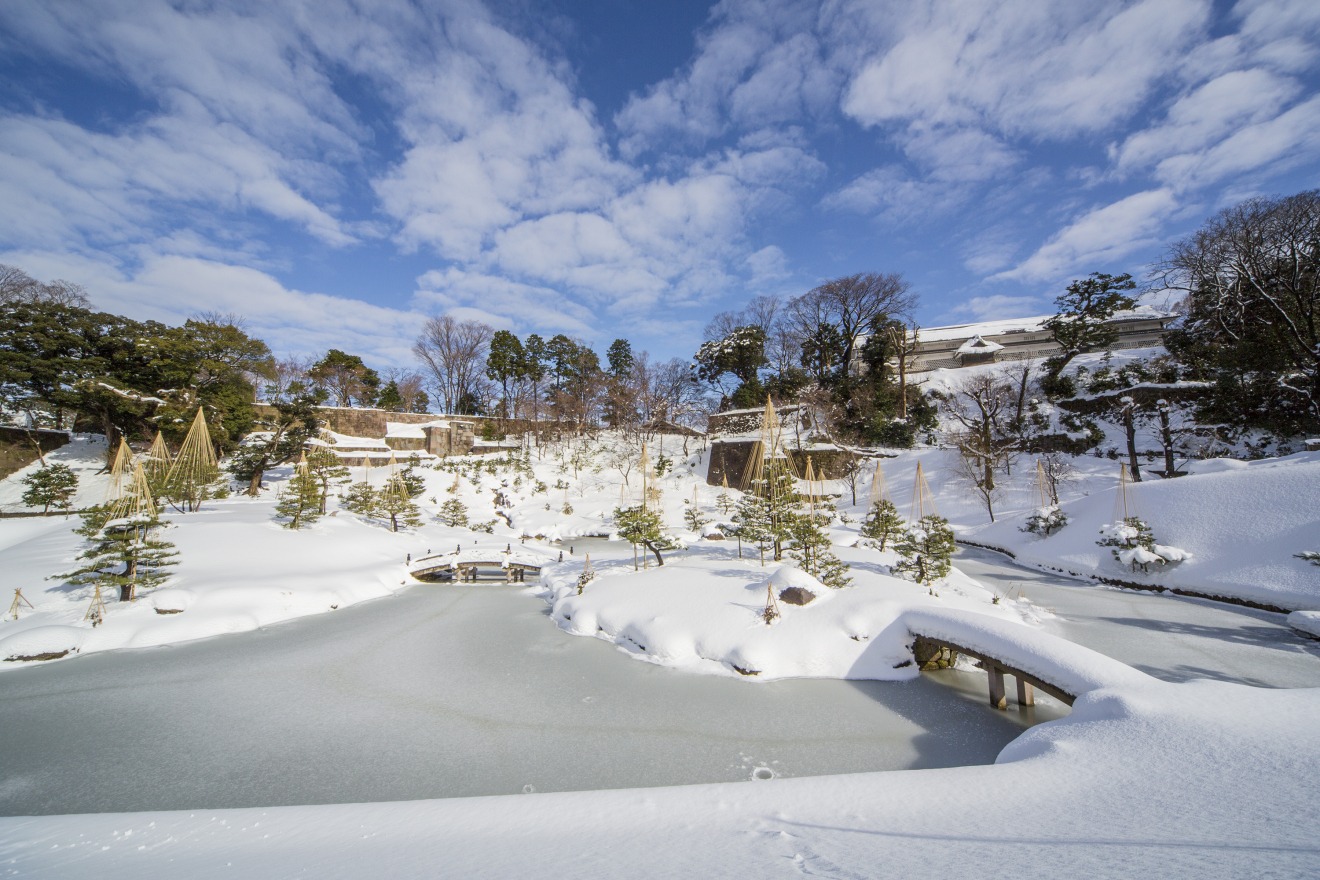Winter Attractions in Kanazawa
Not just any city in Japan can call itself a Winter Wonderland, but Kanazawa, with its snow-covered scenery, delicious winter cuisine, and accessibility from Tokyo, Osaka, and Kyoto, can certainly claim this status. Find out what makes Kanazawa such a spectacular destination when the autumn colors give way to drifting snowflakes and how to enjoy it.
【Click below for other seasonal attractions】
●Spring Attractions in Kanazawa

Classic Winter Views in Kanazawa
The most glorious sight in Kanazawa during the snowy months is undoubtedly Kenrokuen Garden. In the late autumn, pine trees are fitted with yukitsuri, an ancient method of protecting branches from breaking under the weight of the snow. The sight of the garden blanketed in white and the beautiful symmetry of the yukitsuri in action is not to be missed. For a romantic experience, return to the garden after dark when the most scenic parts of the garden are illuminated for a limited time during February.
Like the yukitsuri of Kenrokuen Garden, the Nagamachi Samurai District also undergoes a transformation in winter designed to protect its precious assets. Straw mats are hung over the earthen walls of the residences along the streets, protecting them from becoming soaked with water which would damage the walls. It's an important and meaningful tradition that has been carried out through the centuries and is a quintessential winter scene in Kanazawa.
Even the Chaya districts, with their classic Edo Period architecture, are transformed by the winter weather. On snowy days when the snow completely covers the buildings and streets, these districts can resemble real-life Sumi-e ink paintings.
Of course, no winter in a Japanese city would be complete without winter illuminations. The areas around Omicho Market, Korinbo and Katamachi are each illuminated with thousands of LED lights after dark, perfect for a romantic stroll. It somehow becomes even more romantic when the soft snowflakes begin to fall if that is even possible!
Outside of the city, popular winter destinations include the picturesque mountain village of Shirakawa-go, and the onsen hot spring baths of Kaga Onsen and the Noto Peninsula.
- The Four Seasons of Kanazawa Castle and Kenrokuen Garden: Winter Illuminations
-

- An Enchanting Snowy Kingdom
- more
- Nagamachi Samurai District
-

- A stunningly preserved samurai district in the center of Kanazawa
- more
- Komogake Installation
-

- A winter tradition in Kanazawa
- more
- Yukitsuri Installation at Kenrokuen Garden
-

- A Kanazawa winter tradition
- more
Staying Indoors in Winter Kanazawa
The unpredictability of winter weather in Kanazawa means you might have to seek refuge from the weather for a short period on some days. On these occasions, there are still ways to enjoy the city and even the winter scenery, warm and safe indoors.
The D.T. Suzuki Museum, with its modern zen design and spaces made for quiet meditation, is a perfect place to rest when the weather becomes too much. Take a moment to sit silently in the Contemplative Space and fill your mind with peaceful images of the snow falling on the Water Mirror Garden.
Another museum offering beautiful views of its surroundings is the 21st Century Museum of Contemporary Art, Kanazawa. This circular building with a 360-degree view is a great place to wait out bad weather, to say nothing of the fascinating exhibits on display there.
It's lovely to watch the snow falling while walking around Kanazawa Castle Park, but if the weather becomes too much, duck into the Tsuru-no-maru rest hall, with its floor-to-ceiling windows with a panoramic view of the castle. Warm up with Japanese tea and sweets while you wait out the weather and enjoy the view. Also in the park is Gyokusenan, the tea room overlooking Gyokuseninmaru Garden, another location to enjoy a hot matcha tea and confectionery while getting out of the cold.
Many shops and other locations around the city offer hands-on experiences making traditional Kanazawa crafts. These workshops can last an hour or longer and can be the perfect way to stay warm and dry while engaging in Kanazawa culture. If you know the weather will be problematic on a particular day, you could even reserve a longer workshop in advance, like a Kanazawa cooking class, to make the most of your time.
- D.T. Suzuki Museum
-

- Learn about the life and teachings of Kanazawa’s most famed philosopher
- more
- 21st Century Museum of Contemporary Art, Kanazawa
-

- A hub for contemporary art in Kanazawa
- more
- Kanazawa Asanogawa Enyukai Hall
-

- Museum and Theater of Kanazawa Geiko and Chaya Districts
- more
- Myoryuji Temple (Ninja Temple)
-

- You will be amazed at the pitfalls, hidden stairs, and other tricks! Ninja Temple
- more
- Ninja Weapon Museum
-

- Fun sighteeing place for everyone
- more
- Kenrokutei
-

- Japanese Restaurant in front of the oldest water fountain in Japan
- more
The Bounty of Kanazawa's Winter Cuisine
Somehow, the food seems to get even more delicious in Kanazawa during the winter. Perhaps it's because the winter season increases the already vast bounty of seafood coming from the Japan Sea. Or perhaps, coming in from the brisk weather, a hot meal just tastes that much better. Whatever the reason, eating out in Kanazawa in the winter is a treat, especially if you try our winter favorites.
Snow crab season in Kanazawa begins November 6th and lasts about 2 to 5 months for female and male snow crab, respectively. Females are small with sweet meat, and eating them with their eggs is a local delicacy. Males are large and provide a lot of meat for a small group of people. They are often served boiled or grilled, but the freshest ones can also be eaten raw, sashimi-style. Please note that many restaurants serving this popular dish may require advance reservations.
Yellowtail and sweet shrimp are also popular seafood in winter. While yellowtail is available year-round, it puts on a layer of fat in winter that makes it melt in your mouth. Sweet shrimp are, as you can imagine, plump shrimp with sweet-tasting meat, often eaten raw as sashimi or sushi.
Oden is a hot pot dish popular all over Japan in the colder months, a comfort food representing the "taste of home" for many Japanese people. Kanazawa oden is known for its signature ingredients you won't find elsewhere. It can be served with Kani-men, female snow crab, available only for a short period during winter. Its sweet meat and delicate flavor are unique and not to be missed if you are visiting Kanazawa at the right time. Kuruma-fu is a wheel-shaped gluten cake that soaks up the dashi broth the oden is simmered in. Eating the kuruma-fu allows you to enjoy all the flavors of the ingredients fused in the broth.
Finally, nothing pairs better with oden than a bottle of hot sake. The region around Kanazawa is known for producing delicious sake from pure mountain water and great-tasting rice. While you can drink sake hot or cold, the hot version feels great after being out exploring the city all day long.
Kanazawa is easy to access from Tokyo via the Hokuriku Shinkansen bullet train or Osaka and Kyoto via the express train Thunderbird line in about 2.5 hours. With its unique urban winter landscapes and incredible seasonal cuisine, Kanazawa is worth a visit during your next winter visit to Japan.
How To Pack for Winter in Kanazawa
Although snow is common in the latter part of winter in Kanazawa, the temperatures are not as cold as you might think. Compared to Tokyo, the average high temperatures are only 2 degrees C colder in Kanazawa, so you might not even notice the difference.
On a given day, weather conditions can change from snowy to sunny and everything in between, so be prepared by layering clothing with outerwear, sweaters, scarves, and gloves that you can take on and off, going in and outdoors. Snowfall usually begins around the end of December and continues through the end of February, but not every day or even all day long.
Early December and Late February: Pack a winter coat, down jacket, sweaters, scarves, and gloves.
Late December to Early February: The same as above, but with longer outerwear.
Kanazawa has a unique system to remove snow from the roads using groundwater. It keeps the streets snow-free and less slippery but also perpetually wet. Locals usually wear waterproof boots in the winter, but if you don't have your own, you can rent a pair for free (along with a rain umbrella, if you need one) from the Kanazawa Station Tourist Information Center or Kanazawa Central Tourist Information Center.
























